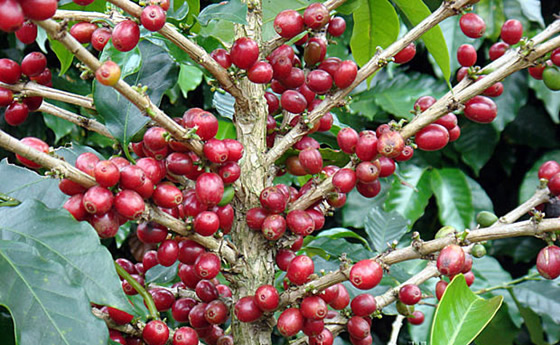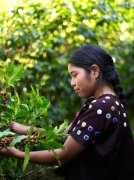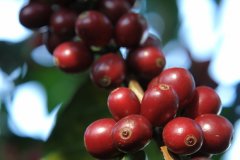American flavor coffee beans in Manisales, Brazil quality raw beans of Brazilian beans
Colombia, once the second-largest coffee producer after Brazil but now third behind Vietnam, is the world's largest supplier of washed beans. Colombia has become synonymous with good coffee after years of image building. Although the flavor is balanced, the texture is thick, the acidity is bright, and the aroma is OK, but on closer inspection, most of the Colombia beans are mediocre and have little personality. When choosing Colombia beans, you can't just look at the grade mark, but pay attention to the production area, because Colombia is currently graded according to the size of beans, so the Supremo or Excelso on the coffee bag refers to the size of beans rather than the quality, but the size of beans actually has no inevitable relationship with the flavor of the entrance, but the altitude of the origin and the taste are closely related, so this grading system is often criticized by people. In fact, most of them,
South American countries have moved to elevation grading, but only Colombia maintains the traditional grading system, and many Colombia coffee-makers have recognized this and begun to demand a change in the grading system. Colombia's famous large producing areas include Medellin, Armenia and Manizales, so MAM is sometimes seen on the bag containing coffee, which means that the coffee beans may come from any of these three producing areas. Almost all of Colombia's finest coffee beans are grown on traditional small farms, which grow old coffee trees of the Typica species. The trees are good and the harvesting and handling procedures are careful, so the quality is extremely high, but the relative yield is also low.

Important Notice :
前街咖啡 FrontStreet Coffee has moved to new addredd:
FrontStreet Coffee Address: 315,Donghua East Road,GuangZhou
Tel:020 38364473
- Prev

Tarasu Coffee from Costa Rica Coffee St. Roman Coffee processing Factory Fine Coffee
Costa Rican coffee is praised as complete coffee by many gourmets, because its overall performance is very balanced, the flavor is very clean and tight, the delicate sour taste with green apple (sometimes citrus or plum fruit), the body is tight but not thin, and the sweetness of the coffee will stay in the throat for a long time after drinking, so it has been described as perfectly balanced! The best taxi.
- Next

Mexican coffee Vivetenango Coffee quality Mexican Coffee from Chiapas
Mexican coffee is a coffee-producing area from Cottpe and Veracruz in the north to Plumas in the central Oaxaca region to Chiapas in the southernmost, and the flavor varies from region to region. Although there are many producing areas in Mexico, but because the quality stability is not high, we have to try in many ways in order to select the ones of high quality. Basically, the coffee standards of Oaxaca and Chiapas are relatively good.
Related
- What documents do you need to go through to open a coffee shop? coffee shop coffee shop certificate processing process
- How to purchase Coffee beans in small Cafe how to choose a suitable supplier for domestic Coffee supply Company
- How to drink Starbucks Fragrance White Coffee? how to make Australian White Coffee? what Italian coffee beans are recommended?
- The Story of Flora Coffee: the name of Flora Coffee Bean and the implication of the Flowers on Florna Coffee
- How much does a cup of coffee cost? How much is the profit of a cup of coffee? What is the profit of the coffee shop in a year?
- Yunnan small Coffee, known as "fragrant Coffee", introduces the characteristics of Alpine Arabica Coffee producing areas in Yunnan, China
- 2023 latest Starbucks full menu price list how much is a cup of Starbucks coffee what is better to drink the most popular hot and cold drinks recommended
- Starbucks different kinds of Coffee Price list Starbucks menu 2023 Top Ten Best drinks in Starbucks
- Starbucks Spring praise Comprehensive matching Coffee Bean theme Story Packaging implication and taste description
- The cost of a cup of coffee latte American coffee cost price and selling price

